Out with the old and in with the new, but worse platform. I have been wondering about the Intel Atom D510 performance for quite a while now alongside the NM10 chipset. It is essentially Intel’s upgrade to the venerable dual-core Intel Atom N330. With the consolidation of features to the D510 and NM10 Intel was able to get rid of a power- hungry 90nm process component and deliver a reduced feature set in the name of lower power consumption. For low power file servers, the Atom platform is great. One will notice these days that Intel’s 32nm Clarkdale line has idle power consumption similar to the D510. Where the Atom CPUs really shine is in load power consumption. Unlike the Core i3-530 and Core i5-650 (and their higher clocked Clarkdale brethren), the Atom CPUs are somewhat famous for only adding a nominal amount of power consumption when being fully taxed versus sitting idle. That is why many of the NAS appliance vendors that run proprietary Linux distributions choose the Atom to do software raid parity calculations.
Sadly, Intel has decided to leave the NAS and HTPC markets out to look at other offerings instead of its Atom D510 platform.
Test configuration
For this review I used the ZOTAC NM10-A-E with the Atom D510 CPU and NM10 chipset. It should be noted that I removed the mini PCIe WiFi card to make the power consumption numbers comparable to other test systems that did not have wireless cards built-in.
- CPU(s)/ Motherboard: ZOTAC NM10-A-E with onboard Intel Atom D510
- Memory: 4GB of OCZ Platinum DDR2
- Case: Apex MI-100
- Drive(s): Patriot PS-100 32GB
- Power Supply: PicoPSU 150XT
- OS(es): Windows 7 Pro 64-bit
I also am using the PicoPSU 150XT again instead of the integrated Apex MI-100 PSU. I simply want to keep the test configurations as close as possible. In the real world, it makes little sense to use this configuration since spending $70+ on a small PSU and power brick disregarding the “free” PSU makes little sense economically, and from a space perspective.
Power Consumption
It is a widely known fact that the old 945GC + ICH7 arrangement of the original Atom N330 dual core CPU was power hungry, using up to 25-26w just between those two chips. The NVIDIA ION platform combined an Atom N330 plus a NVIDIA part including onboard graphics to lower power by a substantial amount, due mainly to a major process shrink between the Intel and NVIDIA parts. The original Atom + 954GC/ ICH7 platform I passed on because of this in everything except my Dell netbook. Here is a quick screenshot of the great Atom D510 and NM10 power consumption.
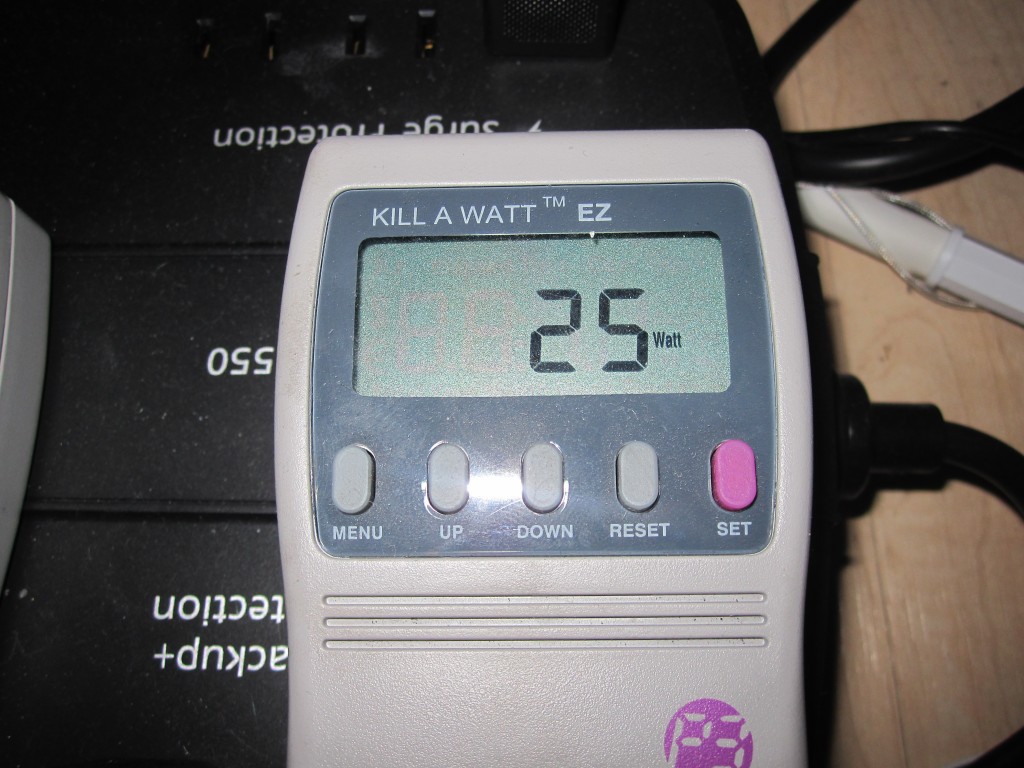
25w!!!! How great is that? Lower idle power consumption than the N330/ION (31w) and Core i5-650 (27w). Intel, great job on the power consumption! Now for performance, remember this is an Atom CPU so this is not going to be pretty.
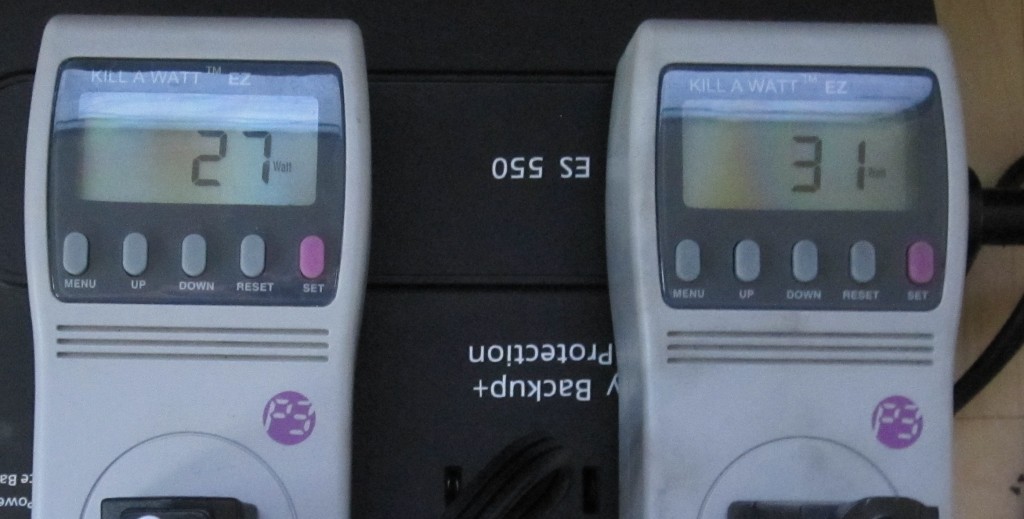
Clearly the Atom D510 is showing very low power consumption relative to Intel’s other CPUs.
Performance
The Atom D510 is a step ahead of its predecessor Atom N330 in terms of performance which is welcome.
Windows Experience Index
Windows 7’s built in Windows Experience Index CPU benchmark is not the best CPU benchmark by any means. It is however installed in millions of PC’s (running Windows 7) and does provide a general performance ranking between CPUs that is accurate from a ballpark perspective.

The WEI CPU score of 3.4 is fairly good, 0.1 above the Atom N330 or a similar increment between a Xeon X3440 and a Xeon X3460 (that speed step costs more than the entire Atom D510 motherboard and CPU for comparison). Also, one can see 3.0 graphics scores. Clearly this is not a gaming platform and it is easily bested by the 4.1 Graphics and 5.2 Gaming Graphics scores the N330/ ION platform was able to produce. Memory performance also slightly improved although this is a very small incremental gain.
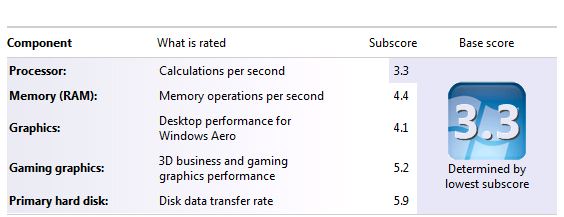
Handbrake 0.9.4 Transcoding
My other favorite benchmark is encoding x264 video using Handbrake 0.9.4 on CPU’s. This is because many people store video files on their Windows Home Server, and video encoding/ transcoding takes a lot of CPU power. It oftentimes makes sense to utilize the Windows Home Server to do this encoding for iPods, iPhones, iPads, Zune HDs and etc rather than a main PC due to the fact that video encoding uses 90%+ of available CPU cycles, slowing down the system it runs on. Here is the table, expanded for the new entrants:
Handbrake performance inched up to 23fps, slightly better than the N330. On one hand this is about 9-10% better performance. On the other hand, the Core i3-530 provides a lot more CPU power in a $100 chip. The AMD Sempron 140 Sargas, single core, is still significantly faster than either Atom setup in terms of Handbrake video encoding performance.
At the end of the day, the D510 is a faster chip than the N330, but it is not going to win any performance awards. Lower power consumption, faster speeds, what is wrong with the Atom D510 and NM10? The feature set if you are not using the combination in a netbook.
Features, or lack thereof
First off, I cannot give the new Atom D510 Pineview platform a glowing review because of the NM10 chipset. Intel decided to save a few transistors and give it a maximum of 2 SATA ports with the NM10 Tiger point chipset. Practically speaking, this means if one wants to have a decent capacity file server (i.e. something that uses over two drives and therefore makes sense to move out of a main PC), then they need an add-in PCIe card. With something like an 8-port LSI 1068e based card starting at $150, adding extra SATA connectivity is not cheap. Furthermore, adding a PCIe card for more SATA ports means that one forgoes the ability to add an Intel based gigabit NIC to non-Intel motherboards based on the NM10 chipset. Bottom line, the NM10 is not a suitable file server chipset.
After seeing the SATA limitation, I quickly realized that the only sensible thing to do would be to use this as a HTPC with Windows Media Center. That idea lasted but a few moments.
Where the N330 + ION combination had a decent GPU that could decode h264 video, the Atom D510’s GPU cannot. The purported remedy is to add a mini PCI express decoder card from Broadcom the Crystal HD Decoder BCM70012. A quick check shows the card is at least $50 yet allegedly consumes 2w. My big issue with this is the fact that the Microsoft Zune HD, Apple iPad/ iPod Touch/ iPhone all decode h264 video and have extremely low power requirements. Also, buying that Broadcom card is $50. For HTPC purposes, it makes the D510 platform cost $130+, which is in the realm of i3-530 + motherboard deals, except the i3-530 is a much more competent platform.
Furthermore, if one does decide to output video, one is limited to 1366×768 resolution, even using HDMI out thanks to Intel’s GPU limitation. Frankly, this is unacceptable in 2010. It would have been borderline unacceptable in 2000 when people were still using CRT’s and TV’s at 640×480 resolution. Just as a point of reference, the now defunct STB system’s Velocity 128 card (based on the original NVIDIA RIVA 128 and 4MiB of memory) could output to 1600×1200 resolution, in 1997 or thereabout. Now that the world runs on 1080p and mobile devices, every desktop device should support 1080p resolution, period. The fact of the matter is that one could spend an extra $50-90 on the Broadcom chip, but it would be fairly pointless unless someone had a legacy 720p early plasma or LCD display that they were sending video to. Intel simply missed on this one.
An interesting note for people like myself using Remote Desktop Connections (a feature greatly enhanced by WHS), a D510 based PC has no problem with 1920×1080 RDP video output. If you need to run an application like Microsoft Excel at a higher resolution, RDP is actually a better option than onboard video outputs.
In a netbook, these features would not be missed and the D510 would be at home, however this is the “D” series Atom and therefore destined for higher power consumption net top applications, not netbooks.
Conclusion
Overall the D510, paired with the NM10 is a poor choice for most computing purposes. In making a chip for netbooks, Intel has effectively neutered the Atom D510 and NM10 pairing to the point where it is neither a capable NAS nor HTPC platform. Sure, one could add a RAID controller to the NM10’s interface, but then dual, or possibly even a single Intel Gigabit Ethernet connection is impossible. No h264 decoding onboard without resorting to a $50+ add-on card means that playback of one of today’s most popular video formats is impossible. Even with the add-on card the display is limited to a paltry resolution well below that used by even $150 PC LCD’s and modern HD televisions sets.
Basically it boils down to the fact that Intel’s Atom D510 uses less power than the legacy Atom N330/ ION platform, but is unable to do useful tasks outside of web browsing (not of YouTube mind you) and office applications. NAS and HTPC users would be wise to look elsewhere.


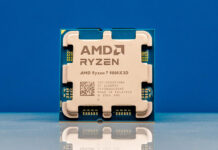
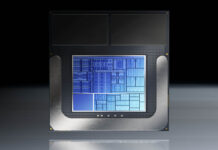

I have a Gigabyte GA-D510UD that has 2 additional sata ports and it’s attached to samsung monitor with 2048×1152 resolution over vga cable.
The Gigabyte motherboard has an on board JMicron JMB363 controller, much like my Gigabyte X58-Extreme. The JMB363 also provides that board’s PATA connection. Usually the JMicron controllers are significantly slower than Intel SATA II controllers which is why the general wisdom is to put hard drives on the Intel ICH10R/ NM10 ports and optical drives on the JMicron ports because they are much slower. Just for reference, the JMB363 sits off of a PCIe x1 bus (2.5gbps) so it is very similar to having a 2 SATA II port + 1 PATA port PCIe x1 controller onboard and is actually slow enough that it will bottleneck a modern SSD. If you are interested you can see the documentation here http://www.jmicron.com/PDF/JMB363/JMB363.pdf
Best of breed from a D510 server motherboard perspective are fairly clearly the Supermicro X7SPA-H and X7SPA-HF which incorporate 6-port Intel ICH9R and two Intel 82574L NICs. Frankly, feature wise for the home server nothing comes close with a D510 onboard.
On the resolution, the GMA 3150 with the N550 is limited to 1366×768 over HDMI and 2048 x 1536 for VGA. VGA is an analog output without things like HDCP which would let you play back protected content. Also, trying to find home theater receivers with VGA inputs is considerably more difficult than HDMI inputs. At this point, CRT monitors and conference room projectors are the big VGA connection applications. Most users with CRT monitors are hemorrhaging power through their displays since CRT uses much more power than a modern LCD of the same size. A portable D510 (or similar) platform is a Netbook which is much more suited to conference room projectors. The honorable mention VGA display application is as a PIP display inside a HDMI/ HDCP protected link. Analog signals are much easier even for cheap displays to downscale for PIP, even if the display alignment is sometimes suspect due to the analog to digital conversion.
thanks for an HONEST review. seems like most others glossed over the native 2 SATA and digitial video out issuess. let me guess, you are not an intel launch partner 8)
QFT – Used the 14 day return policy on my Atom motherboard because it was slow. Patrick you should mention how slow it runs VAIL. My iPad and iPhone 3G (not GS) both feel much snappier than the Pine View Atom.
Keep up the good work dude.
I just cant understand what Intel is doing with its low power CPU’s. Everyone wants them but they are just supplying us dross (32nm dual cores aside). Why is impossible to but a CULV chip and GS45 chipset in a desktop form factor? Ive got one in a Acer ultra portable and its more than enough perfromance for the majority of tasks but of course I would like the ability to add extra PCIe cards whilst drawing 18-25w or so. We are being forced to buy inefficient PC’s becuase some marketing nitwit thinks I need a quad core to check my email or run a few VM’s.
Fortunately the ARM is starting to hand their arse to them in the “just enough”segment.
OK, I feel better for getting that off my chest:)
Well I’m buying a Pentium G9650 and a Intel BOXH57JG now. I hear good things. Patrick any idea about that combo?
Thanks for the kind comments.
Allen – I honestly think the D510 is too slow for 2008 R2 and derivatives like VAIL. My thought is that there is little reason to save a few dollars and have to wait or worry about performance.
Adrian – the 32nm clarkdales basically do that already. The major difference is that the clarkdales can consume a “decent” amount of power under load. Do remember though that a CULV Core 2 Duo chip does not have an integrated GPU so even a CULV will need some form of GPU which will take power to run, effectively bridging some of the gap between CULV Core 2 and Clarkdale.
Johnny – Wait about a week. I will have a review for the BOXH57JG plus an i3-530 up. It is a great combo.
Patrick – True but the CULV is also combined with a mobile chipset so the total power use is very low, even compared to the excellent i3. Looks like a board is about to be realesed:
http://hothardware.com/News/Computex-2010-Zotac-Displays-New-ITX-Motherboards-ZBOX-Models/
I used to run S2k8R2 Hyper-V plus two VMs on a similar setup and it was fast enough for a lab. Power use was about 6-7w lower than the i3, which is about a 30% reduction. Great if you want a couple of hosts to play around with Live Migration/VMotion.
That is not bad at all. 6-7w would put it below the D510 in power consumption. I may try CULV desktop boards one of these days. I have a feeling that Sandy Bridge is going to change the low power landscape though.
Patrick,
Do you happen to have the power consumption at full load, watching movie, or maybe with two hdd in file-server configuration on your D510 testbed.
Thanks,
Kabel
I try not testing at full load and with drives because SSDs have a tighter idle to max range for setting a baseline. For load power consumption, I have never seen the D510 or N330 use more than 8w over idle. That is the great thing about Atom chips.
With drives, they vary a LOT by generation (which changes things like how many platters for a given capacity), rotational speed, and things like how fast heads are parked. Depending on the drive I have seen 3.5-8w idle power consumption per drive. My advice is to look up power consumption figures for each drive you would want to use and add to the numbers on this site.
I know that C64 is one of the best graphic card…
so sad intel atom d510 is not intende for gaming. I installed mine with call of duty, brothers in arms and gta but it disgusted me.
Just for people reading about the ability to add the Broadcom HD decoder to the extra mini PCI-E slot, this does NOT work. The motherboard will refuse to POST with this card installed, no matter what settings you use in the bios.
I use mine as a NAS, torrent box and media server for my PS3 and Tivo. Install the OS, remove the dvd drive, and pop in an extra 2tb hard drive and it works great for this purpose.
As for overclocking, I added a small low RPM fan to the stock heatsink and it keeps it nice and cool, where it would be really hot running passively. I was able to overclock it to 1.71ghz, but it the board seems to have an FSB wall just above stock speed.
Memory timings are an issue on this board. The options are there to manually set the memory speed and timings, but the board will not actually run how you set it, and will only use the SPD chip’s timings.
These mini-ITX and Atom reviews always bemuse me. These little systems were never intended to compete with general-purpose setups.
The main reason many of us use them is because they are ideal for things such as remote climate and meteorological monitoring stations, which are solar powered.
My 533 MHz VIA mini-ITX machines are running either WinXP or Linux, depending upon application requirements, and they rarely miss a beat. Power consumption? Trivial.
The D510 and D525? They offer a lot more processing grunt while power consumption barely exceeds that of the ancient 533 MHz VIA EDEN processors. Since video encoding and gaming aren’t of any interest, users such as myself are barely aware those limitations even exist.
Low power-consumption mini-ITX systems (and now the Atom processors) are a Godsend to a lot of people. Computers aren’t entirely about gaming and playing 1080p video.